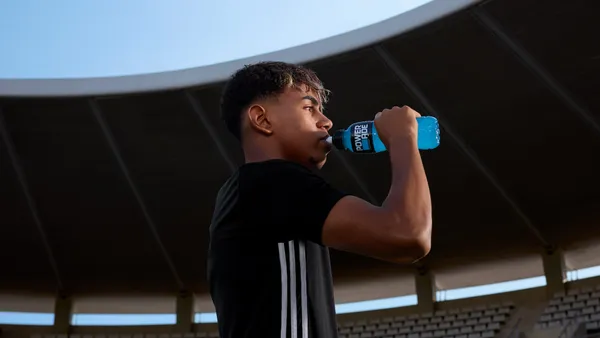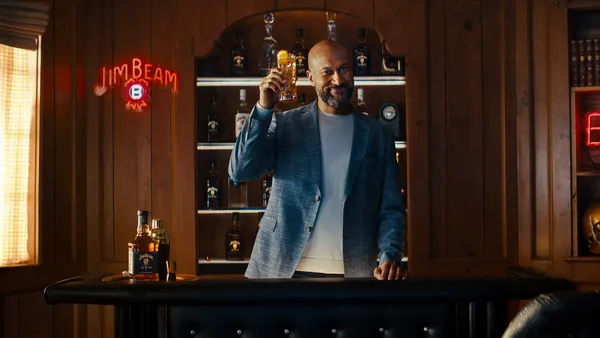Years ago, social games like “FarmVille” changed the way people connected with friends online and left a lasting impression on the trajectory of influential platforms like Facebook. As the pandemic has pushed mobile gaming further into the mainstream, the trend could be due for a resurgence on apps like TikTok and Facebook’s Instagram.
TikTok recently launched a gaming pilot with partners Vodoo, Nitro Games, FRVR, Aim Lab and Lotum. According to TechCrunch, which confirmed the pilot, the new mini-games are found inside the TikTok app while creating a video. When a link to a mini-game is published, it appears as an anchor above the creator’s username that viewers can click through to play the game for themselves. The platform previously tested the waters last year by teaming up with Zynga, one of the companies that took the lead on Facebook gaming back in 2009, to launch an exclusive dance title.
At launch there were seven game titles on TikTok, none of which are currently monetized through advertising or in-app purchases. Instead, the test is intended to determine the TikTok community’s appetite for gaming and whether creators find making content around these titles appealing. While TikTok is only just starting to dip its toes in the waters, other platforms, including chief rival Instagram, have started seeing heavier gaming experiments from brands.
Huge potential
A potential rebound for social-based gaming follows a bigger shift in the video game industry, which has become increasingly connected through games like “Fortnite,” “Minecraft” and “Roblox.” These multiplayer platforms have almost become social networks unto themselves as gaming breaks out of the niche category and metaverse activations rise, providing a place where individuals with common interests can come together.
Companies like children’s brand Osh Kosh B’Gosh, which launched a “Fashion Runway” game on Roblox, and Duracell have recently explored gaming on various platforms to extend their reach and connect with consumers.
“There’s a huge amount of potential,” said Jonothan Hunt, senior creative technologist at Wunderman Thompson UK, which created a scrolling game for Duracell on Instagram.
“We’re seeing people want to express themselves with alternative reality effects,” Hunt added. “Just being able to do fun stuff on their faces [is leading people] to start spending a bit longer on the platforms.”
The competitive “Bunny Hop” game promoting Duracell Optimum debuted in July on the brand’s European and Asian Instagram channels and required players to steer a rabbit through an obstacle course, jumping over rocks, cacti and walls. Duracell batteries at points along the game enabled the bunny to smash through the obstacles with ease, and the score was tabulated based on the amount of uninterrupted gameplay a user had. Those with the highest scores could win Duracell products.
“We were surprised to find an average of 2.5 minutes of playing time,” Hunt said. “That’s a lot higher than the average social media scroll rate.”
Spotlight on shareability
Key to success is execution and understanding that not all gaming platforms are the same. Making a “Fortnite” island is completely different from developing a game that consumers not only want to play but also share socially.
“People aren’t used to playing a game on social, so we had to keep it simple,” Hunt said.
One of the critical elements of creating the game was using Meta’s Spark augmented reality (AR) platform. The tool is traditionally used to create AR experiences like trying on outfits or expressions. Applying it to the “Bunny Hop” game offered players the ability to personalize their experiences and share their scores in real-time.
“You want to make something that’s easy to share,” Hunt said. “The moment our Bunny Hop game ends, you can instantly share it to Stories, and that means your friends can just go to it and experience it.”
The industry is likely to see many more social gaming experiments and programs in the future. Last November, social creative agency We Are Social launched a gaming division to help brands craft meaningful experiences in gaming and esports environments. In announcing the division, agency executives said they see gaming as a core offering for its business within social media, not apart from it.
“We believe gaming is social, not something that should sit in silo from the work we already do,” said Mobbie Nazir, We Are Social’s chief strategy officer, in a statement. “Gaming has become a core part of our business offering over the last few years, and, with the launch of this practice, we’ll be able to help even more brands take a socially-led approach to their gaming strategies.”
As more agencies and marketers move into the space, ideas that incorporate some of the unique properties of social — including the frequency of use — may also be factored into the gameplay.
“The future is full of possibilities, '' Hunt said. “There’s so much that can be done.”














